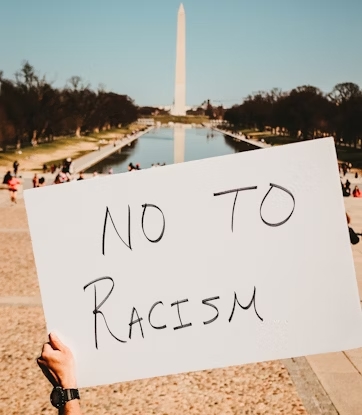Employment discrimination remains a significant issue in workplaces across California. Despite various laws and regulations designed to protect employees, racial discrimination persists, creating hostile environments and impacting careers. As an attorney specializing in employment law, understanding the intricacies of these cases is crucial. This article delves into the legal framework surrounding racial discrimination in the workplace, focusing on who is protected, the timeline and statute of limitations for filing claims with the Equal Employment Opportunity Commission (EEOC) and the California Department of Fair Employment and Housing (DFEH), identifying discriminatory language and behaviors, and the process of gathering evidence and litigating such cases.
Who is Protected?
In California, several laws protect employees from racial discrimination. The primary statutes include Title VII of the Civil Rights Act of 1964 and the California Fair Employment and Housing Act (FEHA). Title VII prohibits employers from discriminating against employees based on race, color, religion, sex, or national origin. FEHA, however, provides broader protections, extending to additional categories such as sexual orientation, gender identity, and expression.
Title VII of the Civil Rights Act of 1964
Title VII applies to employers with 15 or more employees and protects employees from discrimination in any aspect of employment, including hiring, firing, promotions, pay, and working conditions. The law also prohibits retaliation against individuals who oppose discriminatory practices or participate in investigations or lawsuits concerning discrimination.
California Fair Employment and Housing Act (FEHA)
FEHA applies to employers with five or more employees and offers broader protections than Title VII. It prohibits discrimination based on race, color, ancestry, national origin, religion, sex, sexual orientation, gender identity, gender expression, marital status, military and veteran status, medical condition, genetic information, and age. FEHA also mandates that employers take all reasonable steps to prevent discrimination and harassment in the workplace.
Timeline and Statute of Limitations for Filing Claims
Understanding the timeline and statute of limitations for filing discrimination claims is vital for both attorneys and clients. Missing these deadlines can result in the loss of the right to seek legal remedies.
Filing with the EEOC
Under Title VII, an employee must file a charge of discrimination with the EEOC within 180 days of the alleged discriminatory act. However, if the state in which the discrimination occurred has a state agency that enforces anti-discrimination laws (such as DFEH in California), this period extends to 300 days.
Filing with the DFEH
For claims under FEHA, an employee must file a complaint with the DFEH within three years of the alleged discriminatory act. Once a complaint is filed, the DFEH will investigate the claim and may attempt to mediate a settlement between the employee and employer. If the DFEH finds sufficient evidence of discrimination and is unable to reach a settlement, it may file a lawsuit on behalf of the employee or issue a right-to-sue notice, allowing the employee to pursue a lawsuit independently.
Identifying Discriminatory Language and Behaviors
Discrimination in the workplace can be overt or subtle. As an attorney, it’s essential to help clients identify both explicit and implicit discriminatory behaviors and language. These can include:
Explicit Discriminatory Language
- Racial slurs or derogatory comments
- Jokes or comments based on racial stereotypes
- Direct statements of preference or aversion to individuals of certain races
Implicit Discriminatory Behaviors
- Exclusion from meetings or important workplace events
- Unequal application of workplace policies or rules
- Disproportionate disciplinary actions against employees of certain races
Visual Indicators
- Graffiti or symbols of hate in the workplace
- Segregated workspaces or facilities
- Racially biased job assignments or promotions
Gathering Evidence
Proving racial discrimination requires solid evidence. Attorneys must help clients collect and preserve various forms of evidence that support their claims.
Witness Testimonies
Witnesses can provide critical corroborating evidence. Attorneys should:
- Interview potential witnesses, including coworkers and supervisors
- Obtain written statements detailing the discriminatory behavior observed
- Ensure witnesses are willing to testify if the case goes to court
Documentation
Emails, texts, and other written communications can serve as powerful evidence. Attorneys should advise clients to:
- Save all relevant emails, texts, and memos
- Document instances of discriminatory behavior, including dates, times, and involved parties
- Keep records of any complaints made to supervisors or human resources and the responses received
Physical Evidence
Physical evidence, such as workplace graffiti, should be documented thoroughly:
- Take clear photographs of any discriminatory graffiti or symbols
- Preserve any tangible evidence, such as offensive notes or materials
- Report the evidence to HR and document their response
The Litigation Process
Once sufficient evidence is gathered, the litigation process can begin. Understanding the steps involved is essential for both attorneys and clients.
Filing the Complaint
The first step is to file a complaint with the appropriate agency. For federal claims under Title VII, this means filing with the EEOC. For state claims under FEHA, the complaint is filed with the DFEH.
Agency Investigation
The EEOC or DFEH will investigate the complaint. This may involve:
- Reviewing submitted evidence
- Interviewing witnesses and the parties involved
- Attempting mediation or conciliation between the employee and employer
Right-to-Sue Notice
If the agency finds evidence of discrimination and cannot resolve the issue, it will issue a right-to-sue notice. This notice allows the employee to file a lawsuit in court. Alternatively, if the agency does not find sufficient evidence, the employee can still request a right-to-sue notice and pursue the case independently.
Filing a Lawsuit
With a right-to-sue notice, the attorney can file a lawsuit in the appropriate court. The complaint should detail:
- The specific discriminatory acts
- The evidence supporting the claims
- The legal basis for the lawsuit (violations of Title VII, FEHA, or both)
Discovery Phase
During discovery, both parties exchange information and evidence. This phase may include:
- Depositions of the parties and witnesses
- Requests for documents, emails, and other communications
- Interrogatories (written questions that must be answered under oath)
Pre-Trial Motions
Attorneys may file pre-trial motions to resolve certain issues before trial. These can include motions to:
- Dismiss parts of the complaint
- Exclude certain evidence
- Grant summary judgment if there is no genuine dispute of material fact
Settlement Negotiations
Many employment discrimination cases are settled before reaching trial. Settlement negotiations can occur at any stage and may involve:
- Mediation with a neutral third party
- Direct negotiations between the parties
- Offers and counteroffers to resolve the case without trial
Trial
If the case does not settle, it proceeds to trial. During the trial, both sides present their evidence and arguments. The trial process includes:
- Opening statements from both parties
- Presentation of evidence and witness testimonies
- Cross-examination of witnesses
- Closing arguments
Verdict and Remedies
The judge or jury will deliver a verdict. If the employee prevails, possible remedies can include:
- Compensatory damages for lost wages, emotional distress, and other harms
- Punitive damages to punish particularly egregious conduct
- Reinstatement to their position or comparable employment
- Injunctive relief to prevent further discrimination
Conclusion
Racial discrimination in the workplace is a serious issue that requires diligent legal representation to address effectively. As an attorney, understanding the legal protections available, the process for filing claims, and the methods for gathering and presenting evidence is crucial. By guiding clients through this complex landscape, attorneys can help ensure justice is served and foster more equitable workplaces.
FAQs
1. What should I do if I experience racial discrimination at work?
If you experience racial discrimination at work, document the incidents, report them to HR, and consult with an attorney specializing in employment law to explore your legal options.
2. How long do I have to file a discrimination claim in California?
In California, you have three years to file a discrimination claim with the DFEH. For federal claims under Title VII, you must file with the EEOC within 180 days, or 300 days if a state agency enforces anti-discrimination laws.
3. What evidence is needed to prove racial discrimination?
Evidence can include witness testimonies, emails, texts, documents, and physical evidence like graffiti or notes. Detailed documentation of incidents and responses from HR is also crucial.
4. Can I file a lawsuit without going through the EEOC or DFEH?
No, you must first file a complaint with the EEOC or DFEH and obtain a right-to-sue notice before filing a lawsuit in court.
5. What remedies are available if I win a discrimination lawsuit?
Remedies can include compensatory damages, punitive damages, reinstatement, and injunctive relief to prevent further discrimination.




